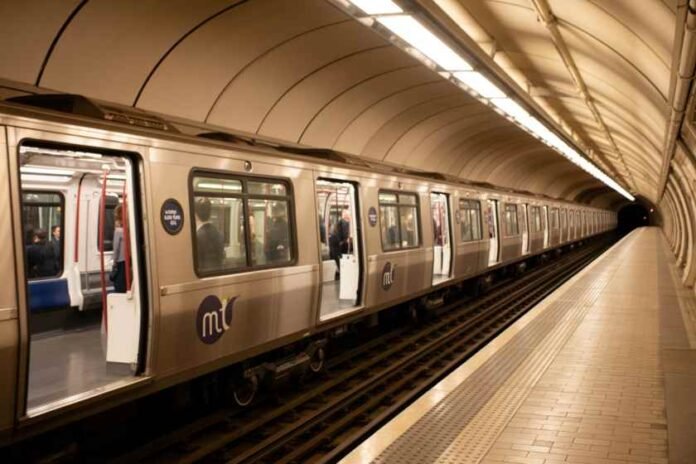Siemens Mobility has secured a landmark contract to deliver an Automatic Train Operation (ATO) system for Paris Metro Line 13, a crucial artery connecting northern and southern districts of the French capital.
The award, made by Paris transit authority RATP, marks a significant step toward a fully automated, unmanned metro network in the city, anchored by Siemens’ cutting-edge CBTC GoA4 technology.
Under the agreement, Siemens will implement advanced automation software, construct a state-of-the-art operations control centre, and retrofit 66 trains on Line 13 with the necessary technologies.
These upgrades aim to enhance operational efficiency, improve passenger safety, and elevate comfort levels. The project is slated for completion by late 2032, extending driverless service to another critical segment of Paris’ metro system, following successful automation on Lines 1, 4, and 14.
Enhancing Daily Travel and Tourism on Line 13
The full automation of Line 13 promises broad benefits for both commuters and visitors. This metro line serves densely populated working districts as well as popular tourist destinations, including Montmartre, the Basilica of the Sacré-Cœur, and Stade de France.
Currently operating beyond its intended capacity, Line 13 will see significant improvements in flow and frequency with driverless trains, reducing wait times and easing congestion.
Line 13 is a central transportation spine, connecting historic neighborhoods and modern commercial hubs. Automated scheduling is expected to shorten travel times, minimize peak-hour queuing, and increase timetabling resilience.
Commuters will benefit from smoother journeys, while tourists will enjoy rapid, reliable access to the city’s iconic attractions without the hassle of multiple transfers.
Seamless Travel for Tourists with Driverless Trains
Visitors to Paris will notice immediate improvements once Line 13 becomes fully driverless. Automation allows trains to run at shorter intervals, efficiently managing passenger volumes and reducing bottlenecks.
This system enables quick transfers to RER lines, buses, and bike-sharing services, offering a seamless urban travel experience. CBTC GoA4 technology governs autonomous operation, prioritizing safety above all. Reduced human intervention lowers the risk of errors, while the system adapts in real-time to passenger demand and train schedules.
Tourists using transport apps will notice trains responding dynamically to crowded stations, optimizing dwell times, and keeping connections punctual.
The result is a smoother journey with minimal waiting, enabling passengers to move efficiently between landmarks like the Eiffel Tower, Louvre Museum, and Champs-Elysees. With automation, Line 13 becomes a reliable backbone for both residents and visitors, offering convenience and enhanced travel confidence.
Building on Previous Automation Successes
Siemens Mobility has already modernized Paris’ metro experience with successful automation projects on Lines 1, 4, and 14. The lessons learned on these lines provide a strong foundation for implementing driverless technology on the city’s busiest and most complex route, Line 13.
Expanding automation will improve service quality, operational reliability, and commuter satisfaction across a vital transport corridor.
The partnership between Siemens and RATP aligns with Paris’ broader smart city objectives. Automated operations serve as a building block for a sustainable, intelligent urban transport network, integrating efficiency, safety, and environmental responsibility.
Environmental and Operational Benefits
Full automation is a key strategy for Paris to meet its environmental targets. Driverless trains consume less energy by maintaining precise acceleration and braking, reducing emissions compared with human-operated services.
Smart train management systems continuously refine schedules, enhancing reliability while minimizing the metro’s ecological footprint.
Onboard control technologies also improve timetable accuracy by eliminating minor delays and service interruptions. Passengers, both tourists and locals, will experience predictable journeys, enhancing daily mobility and travel satisfaction.
The Road Ahead: A Reinvented Paris Metro
By the projected 2032 completion, Line 13 will fully inaugurate driverless service, contributing to Paris’ vision of a futuristic, seamless metro network. Integrating smart automation with environmentally responsible operations underscores the city’s role as a global leader in urban transport innovation.
Tourists will benefit from reliable, frequent connections to the city’s most popular attractions, while daily commuters will experience faster, steadier, and safer travel.
Siemens Mobility’s involvement in automating Line 13 sets a new benchmark for urban transit, combining high efficiency, low environmental impact, and universal accessibility.
The initiative promises to redefine public transport in Paris, offering a model for other major cities worldwide. Enhanced operational intelligence, minimized human error, and careful scheduling coordination will create an uninterrupted, smooth commuting experience.
Ultimately, Line 13’s transformation reflects the city’s commitment to smart mobility, environmental responsibility, and an elevated passenger journey for everyone navigating the French capital.
Siemens Mobility’s automation of Paris Metro Line 13 underscores a future in which urban transport is not only faster and safer but also smarter, greener, and more user-friendly, offering a seamless interface for residents and tourists alike.
This article was created using automation technology and was thoroughly edited and fact-checked by one of our editorial staff members
